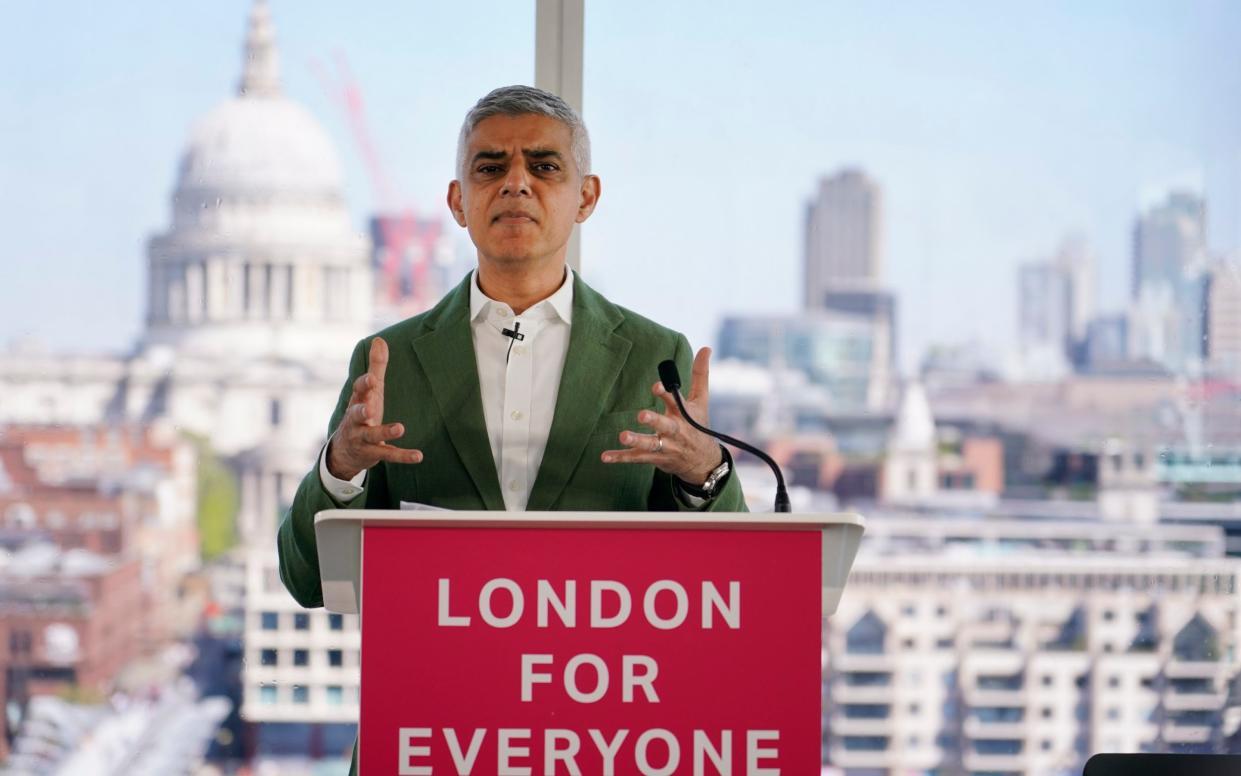The real scandal behind Sadiq’s 20mph speed limits

Four more years of Sadiq Khan’s London – as voters have just chosen – means four more years of ideology before evidence. The Mayor’s “Vision Zero” plan commits the city to a series of policies ostensibly to eliminate every single traffic death and serious injury – a feat never achieved in any city on earth.
And we’re only just beginning to see what enforcement of such a comprehensive, utopian, coddling vision looks like for London. Ulez, low-traffic neighbourhoods, closed roads, and just recently, a new wave of 20mph zones on the Transport for London Road Network (TLRN).
Emboldened, in his acceptance speech, Khan described London as “now a beacon” of “climate action” that has, he claimed, “cleaned up our air”. Except there is no evidence Khan’s pet policies, including 20mph, have impacted air quality at all.
20mph is one of the largest changes to London’s road system in decades – certainly since 30mph limits were rolled out in 1936. But very few people in local government or City Hall, The Telegraph has revealed, have bothered to properly consider the cost-benefit analysis for the policy.
Eight of the 11 boroughs to introduce blanket 20mph limits have admitted they have no record of carrying out a formal cost-benefit analysis and the others could provide little details of their analysis – which mostly only looks at one-off implementation costs, not the long-term impact.
When the Tory MP Ranil Jayawardena MP asked the minister for roads and local transport, Guy Opperman, if the Government knew more, he was told they had “not made an assessment of the impact of the cost to the economy of 20mph speed limits in London.”
This is a scandal. Blanket 20mph limits now cover roughly half the capital, yet there has been little city-wide debate about them. The public deserves to know if they are making us poorer.
One TfL document has suggested Khan rushed to introduce new 20 mph limits on the major arterial roads for the TLRN by this March because he “will wish to publicise the programme ahead of the pre-election period preceding the next Mayoral election”.
Startlingly, it also declares that lower speed limits won’t impact journey times and, therefore, only one-off implementation costs need to be considered. But the “final impact” part of the economic section is marked “TO BE COMPLETED”.
In Wales, the Labour government there disagreed. They did do an economic impact assessment which assumed (very slightly) longer journey times, which led them to calculate a net negative £4.5 billion to the Welsh economy over 30 years.
Given London’s economy dwarfs that of Wales, the economic damage could be even larger. However, traffic moves more unpredictably in urban areas, so it could be less. We don’t know, because proper research hasn’t been conducted.
The TfL document could also be underestimating implementation costs. It only considers an “option” when “no physical infrastructure changes” are made. Other options, including new signage and road marking changes, are “beyond the scope”. The wider economic impact on passing trade, lost journey time, running cars for longer, slower deliveries, slower buses, and the cost to the police who will be expected to enforce these measures at some point, are not considered.
The 11 boroughs I asked with FOI requests largely took a similar approach. Conveniently, they view 20mph limits as an issue only concerning safety and forcing behavioural change. As a document by Lambeth’s Cabinet Member for Environment & Sustainability claimed, 20 mph limits are a “cost-effective method to reduce collisions [and] encourage more sustainable forms of travel…”
The Advertising Standards Authority last year concluded that Khan had made “misleading” claims over Ulez’s expansion and its impact on air quality. This came just months after The Telegraph disclosed that Khan’s office had tried to discredit and “silence” scientists who found that his ultra-low emissions zone (Ulez) policy had little impact on pollution.
TfL does not make the same error with 20mph, admitting there will be no “net benefit” on air quality and most councils, too, admit there is no evidence air quality will be improved (when terrain is hilly and/or roads are used by larger vehicles, the evidence shows 20mph can make air quality worse).
So, all that is really left is safety. Indeed, TfL says safety is the “primary objective” of blanket 20mph limits. But what does the evidence say?
In their “Business Case Narrative” report on 20mph limits, TfL focuses on a 2009 report of German data collected between 1999 and 2007. The same study is used in the “Vision Zero” report to claim, “if a pedestrian is hit by a vehicle at 20mph, they are about five times less likely to be killed than if they were hit at 30mph.” But they don’t clarify that this is only front-on impacts, and the study actually compares 50km/h with 40km/h.
What is curious is that this 15-year old, foreign data is seemingly prioritised over 2018 research commissioned specifically by the Department for Transport (DfT) to be the “the largest, most comprehensive and sophisticated study into the effects of 20mph speed limits to be undertaken in the UK”.
It concluded that “there is not enough evidence to conclude there has been a significant change in collisions and casualties following the introduction of 20mph limits in residential areas.” This conclusion will not have been well-received by those desperate to impose restrictive measures that may, in the end, drive us off the roads.
Maybe this is why London’s Mayor and local government have not, yet, commissioned a comprehensive cost-benefit analysis of 20mph limits on the city – because it might not give them the answer they want.


